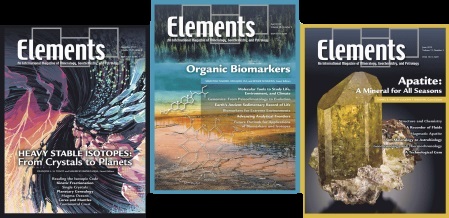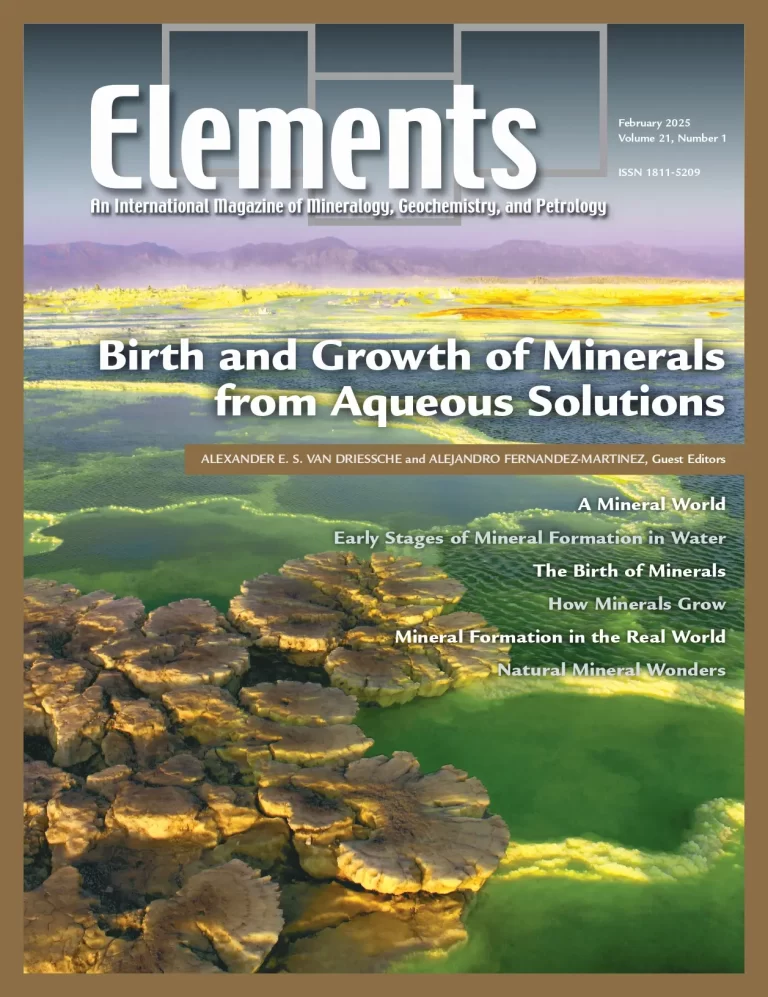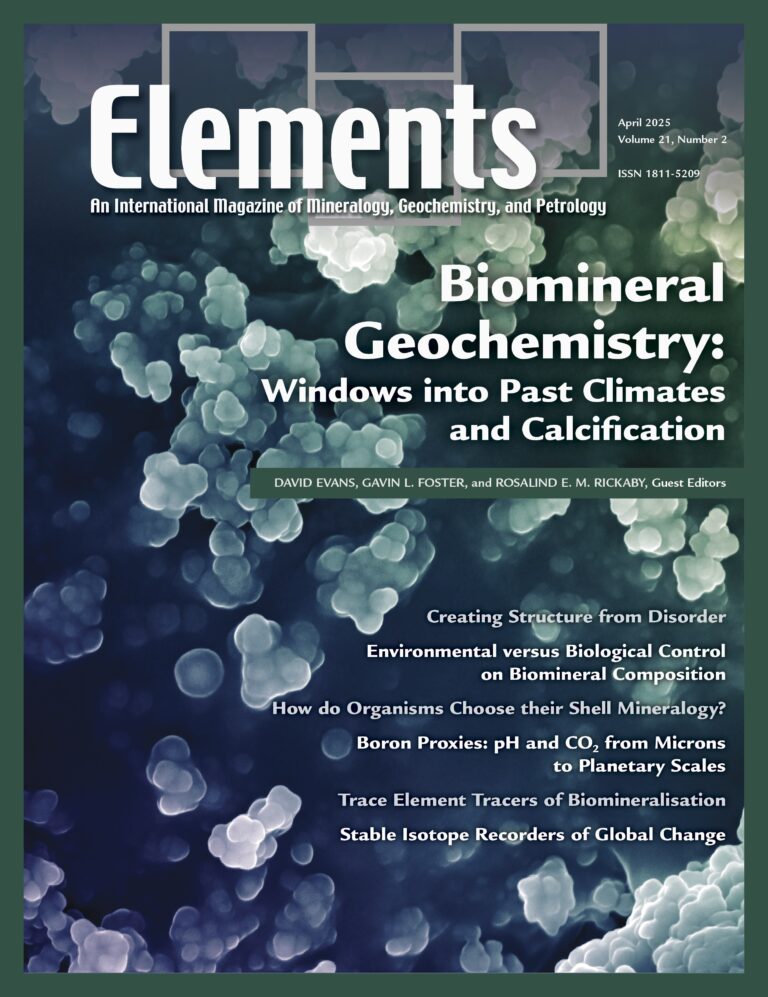Issues Published in 2025 -- Volume 21
- February (v21n1) Birth and Growth of Minerals from Aqueous Solutions
- April (v21n2) Biomineral Geochemistry: Windows into Past Climates and Calcification
- June (v21n3) Greenalite – A Tiny Crystal with a Big Story
- August (v21n4) Re-Os – Clock With Clout
- October (v21n5) Sample Return Throughout the Ages
- December (v21n6) The Variscan Orogeny in Europe – Understanding Supercontinent Formation
February 2025 – Volume 21 Number 1
Birth and Growth of Minerals from Aqueous Solutions
GUEST EDITORS
Alexander E. S. Van Driessche and Alejandro Fernandez-Martinez
PRINCIPAL EDITOR
Sumit Chakraborty
April 2025 – Volume 21 Number 2
Biomineral Geochemistry: Windows into Past Climates and Calcification
GUEST EDITORS
David Evans, Gavin L. Foster, and Rosalind E. M. Rickaby
PRINCIPAL EDITOR
Sumit Chakraborty



